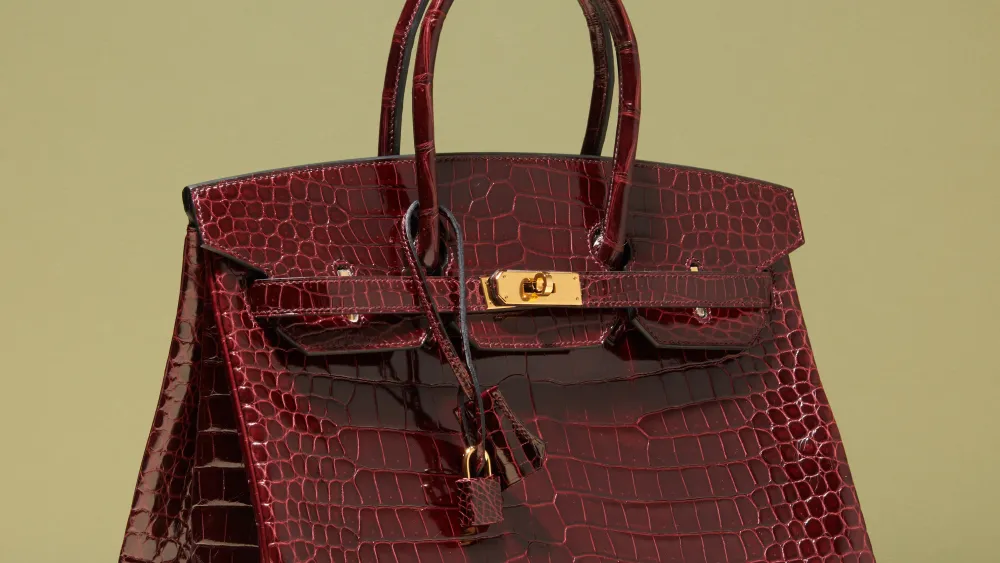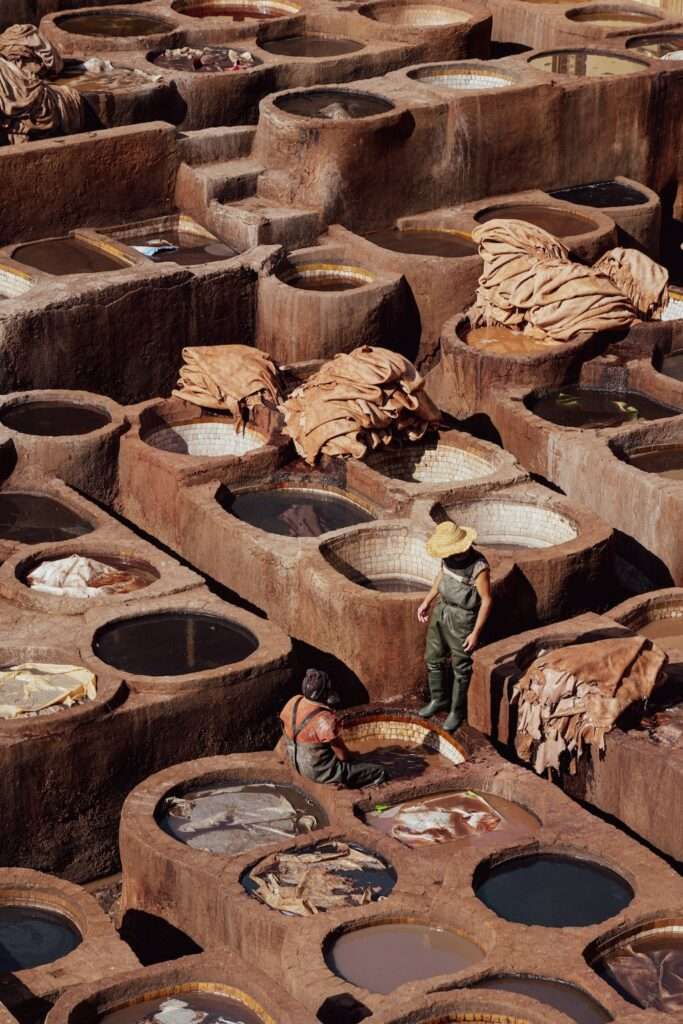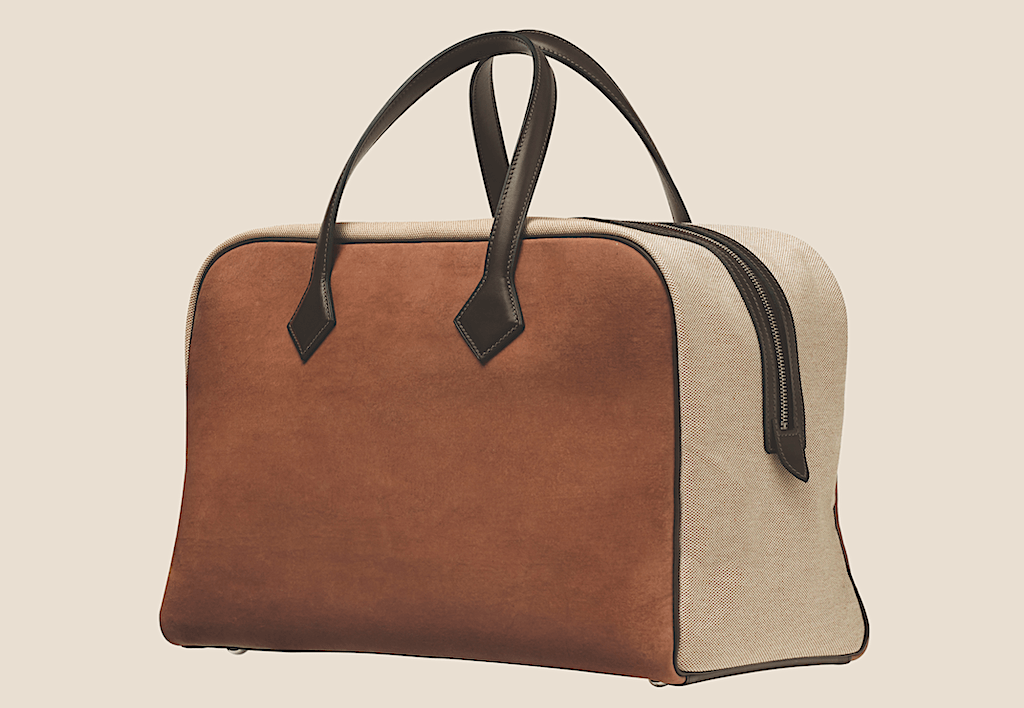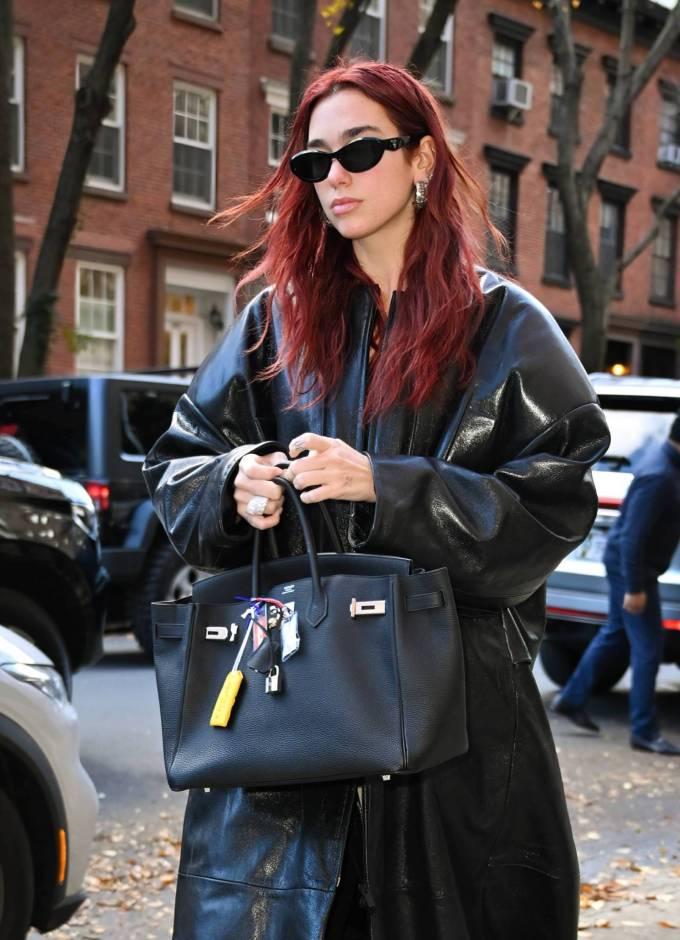The Hermès Birkin bag is arguably the most coveted luxury fashion item in the world. But it shares more with the problematic cheap, fast fashion industry than you might think.
Loved by everyone from Dua Lipa to Kim Kardashian to Jennifer Lopez, a Hermès Birkin bag is the ultimate celebrity accessory. Created in 1984, and named after the late English-French actress Jane Birkin, the luxury handbag has long been highly desirable in elite circles. Birkin bags are not for the average consumer. Prices start at more than $10,000 but the bags can often cost more than $100,000 — even in the millions — and that’s if you can even get in the room with one.

French brand Hermès is notoriously selective about who has the opportunity to buy a handcrafted Birkin bag. In fact, it was recently sued for its Birkin policy, which dictates that customers must have a sufficient purchase history with Hermès before they will even be shown one. This, of course, is in stark contrast to fast fashion’s attitude. That industry thrives on turning over clothes as quickly and as cheaply as possible to as many people as possible.
Fast fashion, rightly so, receives a lot of criticism for the amount of waste it generates. But luxury fashion is not exempt. The Birkin may be one of the most coveted bags in the world, but it, too, is linked to poor environmental practices. It turns out that the shelves of fast fashion giant Zara and the elite, closed-off Birkin showrooms of Hermès do have something in common: ties with the destructive leather industry.
The leather industry’s environmental impact
Deliberate scarcity and top-quality craftsmanship are two of the biggest factors behind the price of a Hermès Birkin bag. The bags are made with only the finest luxury leather, which usually comes from cows. However, some Birkins are also made with exotic leather, including ostrich, alligator, and crocodile leather.

You won’t find crocodile leather at any fast fashion brand. But you’d be hard-pressed to find a fast fashion brand that doesn’t use leather in some way. At the time of writing, a leather shoulder bag at Zara costs around $169 — significantly less than a Birkin, but just like the Hermès classic, it still contributes to deforestation and emissions just as all leather accessories do. It doesn’t matter the rearing method, the farm it comes from, or whether it becomes a highly sought-after Birkin or a fast fashion bargain. One cow will belch out around 220 pounds of methane — a greenhouse gas that is 25 times more potent than carbon dioxide at warming up the atmosphere — over the course of one year while it is alive.
Plus, all cows also need land. The leather supply chain is linked to major deforestation and habitat destruction. According to WWF, cattle production is the leading cause of deforestation all over the world — be it for the leather industry or for the beef industry.
Luxury fashion just can’t give up leather
Hermès’ reliance on quality and craftsmanship makes it inherently more sustainable than many fashion brands, particularly fast fashion juggernauts. But while some luxury fashion brands have turned their backs on leather, the French luxury brand doesn’t have any plans to set an example to the rest of fashion by backing down on its use of the material. Since 2020, it has opened ten new leather goods factories — not just for Birkins, but for the production of all of its leather garments and accessories, which are growing in demand. In a bid to offset some of the impact, the luxury brand fitted one of its new factories on the Dordogne River with solar panels and a rainwater recycling system. It also planted 100 trees and created a garden.
But despite all of this, the brand is still contributing to the idea that leather is a highly desirable, luxury material. This, arguably, won’t shift more Birkins. The number of people who have $10,000 to 100,000 to drop on a luxury bag is unlikely to climb significantly. But, the number of people who head to Zara or another fast fashion brand for a cheap dupe with a similar look? That’s likely to keep increasing. In fact, the global leather handbag market is set to surpass $41 billion by 2031.
Hermès isn’t alone. Brands like Burberry, Gucci, Versace, and so many more help to cultivate the idea in society that leather bags and other accessories are luxurious and desirable. But others, like Ganni, are trying to change the narrative. Stella McCartney, for example, has never sold leather through her eponymous brand and uses novel vegan leather instead, such as apple, mushroom, and, most recently, leather made from Veuve Clicquot’s wine grape waste.
“People really don’t want to talk about the fact that the fashion industry’s biggest impact is its use of leather,” McCartney told Vogue in 2019. “The animals it kills, the toxins, the chemicals, the cutting down of rain forests, the food and water and electricity it takes to make a leather bag.”

Speaking about the slew of fur and exotic skin bans in the luxury market in the last few years, she added: “What’s the difference between an exotic skin and a cow skin? I don’t get it — that’s the same conversation to me. If you really mean it, stop using leather, full stop, and then you’ll see a massive, massive change in the industry’s environmental impact.”
Hermès has explored vegan leather. It launched a vegan leather alternative in partnership with Apple on the iPhone 15 and Apple Watch products released last year. In 2021, it announced a collaboration with San Francisco’s MycoWorks, a mycelium leather manufacturer. Not a vegan Birkin, but they collaborated on the Hermès Victoria bag in Sylvania, made in part from MycoWorks’ Fine Mycelium.
And while an alternative leather Birkin made from sustainable materials has yet to be announced, it’s perhaps not a question of if, but when. At the time of the Victoria bag launch, Pierre-Alexis Dumas, Hermès Artistic Director, said MycoWorks’ vision and values echo those of Hermès: “a strong fascination with natural raw material and its transformation, a quest for excellence, with the aim of ensuring that objects are put to their best use and that their longevity is maximized. He emphasized that, with Sylvania, Hermès is “at the heart” of what it has always been: “innovation in the making.”
Related on Ethos:


